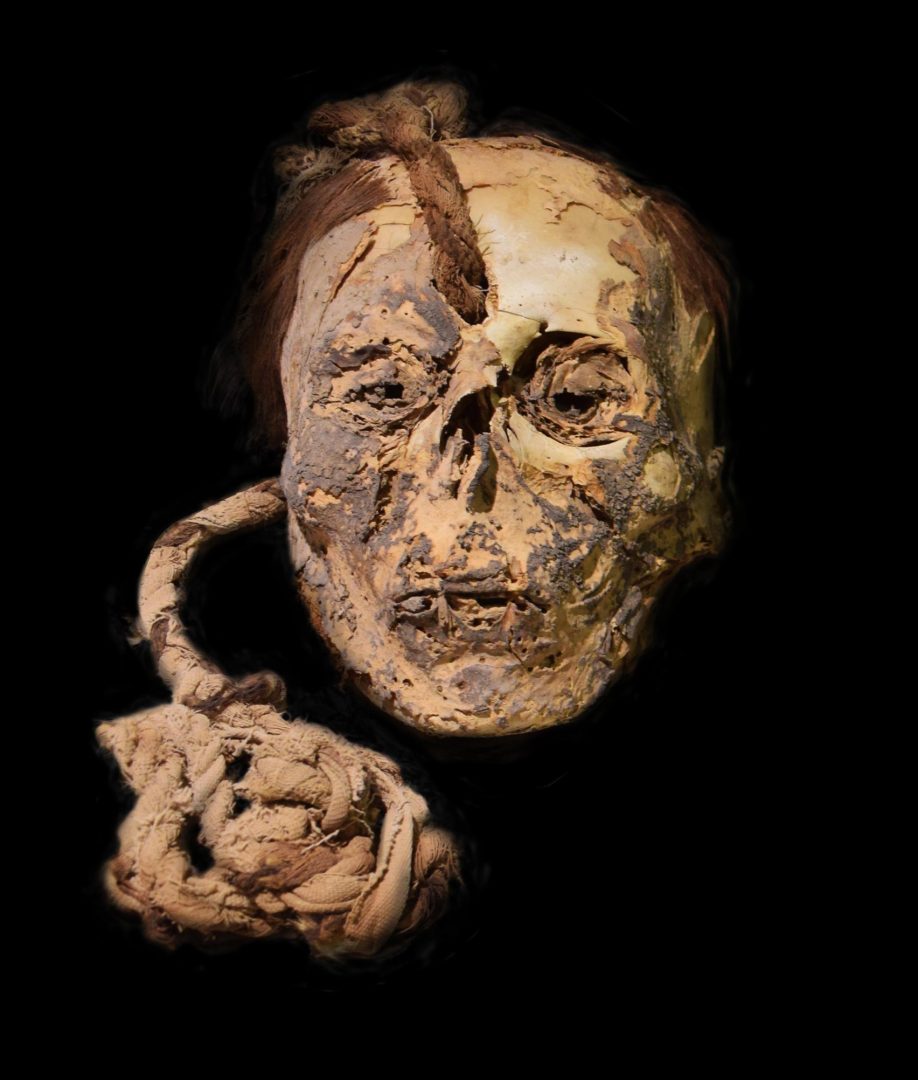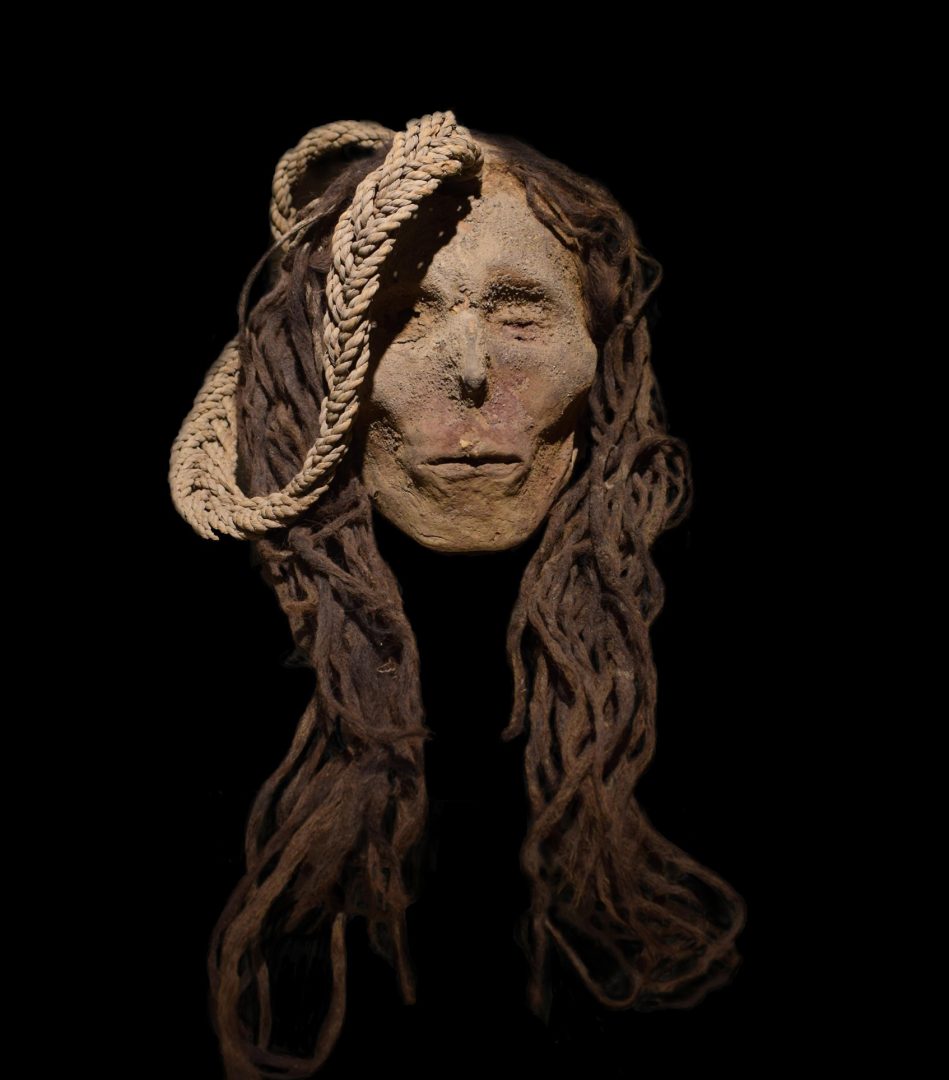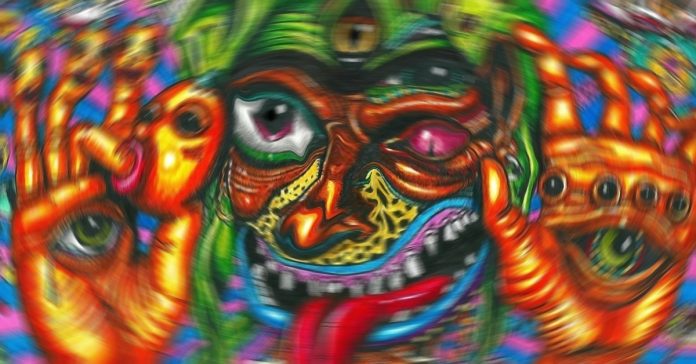In the arid expanses of Peru’s southern coast, where the Nazca and Yauca Valley cradle remnants of ancient lives, a chilling discovery has emerged from the sands. A study published in the December 2022 issue of the Journal of Archaeological Science reveals that mummified heads. Heads severed as trophy “skulls”, carrying traces of psychoactive plants consumed by their owners before death. These findings, drawn from toxicological analysis of hair samples, peel back layers of time. They expose a ritual world where coca, San Pedro cactus, and Banisteriopsis caapi shaped the final moments of the Nazca people. Which spanned the Early Intermediate (100 BCE–450 CE) to Late Intermediate Periods (1000–1476 CE).
Alchemy of the Ritual Dead
The research zeroes in on 22 individuals, four of whom were trophy heads, human skulls deliberately mummified. Many had perforated lips or cords, a hallmark of Nazca warfare or reverence. These heads, excavated as part of the long-running Nazca Project since 1982, offered a rare chance to test for psychoactive substances. In large part thanks to the region’s dry climate, which preserved hair intact. Using liquid chromatography-tandem mass spectrometry (LC-MS/MS). The team detected coca alkaloids (cocaine, benzoylecgonine), mescaline from San Pedro cactus, and harmine and harmaline from Banisteriopsis caapi, the core of ayahuasca. Among the trophy heads, one stood out: a child’s skull, its hair laced with mescaline. This marked the first evidence that Nazca sacrificial victims were given stimulants before their grisly end.
What No Child Should Endure

This child’s head, wasn’t just a relic of violence; it was a window into a ritual act. The presence of mescaline suggests the San Pedro cactus, known for its potent hallucinogenic effects, was administered prior to decapitation. Possibly to dull fear or heighten the spiritual stakes. Unlike coca, which was widespread across the samples (13 of 22 individuals tested positive), San Pedro’s use in this trophy head is unique, no other head showed it. The study posits this wasn’t random; the cactus, native to the Andes but traded to the coast, tied into Nazca cosmology, where altered states might have bridged the living and the divine. Nearby, a headless burial and ritual darts hint at the violent context, dated to the Middle Nazca phase (450–650 CE).
High Time To Die

Another trophy head, belonging to an adult female from Cahuachi, adds depth to the findings. Hair analysis revealed high levels of coca alkaloids—cocaine and benzoylecgonine—but no mescaline or Banisteriopsis caapi. This woman, likely killed in an Early Nazca ritual (100 BCE–450 CE), highlights coca’s widespread use across genders and roles. Her skull, pierced through the frontal bone, aligns with trophy heads linked to fertility or deity worship, distinct from the child’s sacrificial purpose. The coca implies she chewed leaves or drank an infusion before death, a common practice among Nazca elite and commoners for stamina or ritual focus, preserved by the desert’s arid conditions.
Patterns Across Time
The other three trophy heads, and one from Cahuachi; lacked mescaline but carried coca traces in two cases, aligning with its broader use among the Nazca elite and commoners alike. These heads, often buried near temples or settlements, reflect a shift over time: Early Nazca (100 BCE–450 CE) linked them to deities like the Mythical Whale Killer, while Late Nazca (650–1000 CE) tied them to warfare, most belonging to adult males. The study’s hair samples, pulled from these skulls, show psychoactive use persisted across centuries, with Banisteriopsis caapi appearing in one adult head, hinting at long-distance trade from the Amazon, over 400 miles away.
A Legacy in Hair and Bone
These mummified heads, chemically stained with the Nazca’s psychoactive practices, offer more than a macabre glimpse into forgotten rituals. The child’s mescaline-laced hair and the woman’s coca-stained locks reveal a society where stimulants weren’t mere indulgences, or tools of transcendence, but were utilized to subdue victims. As the Nazca Project presses on, each skull pulled from the sand could further map this interplay of plant, power, and death, cementing the trophy heads as silent witnesses to a lost world’s final rites.

